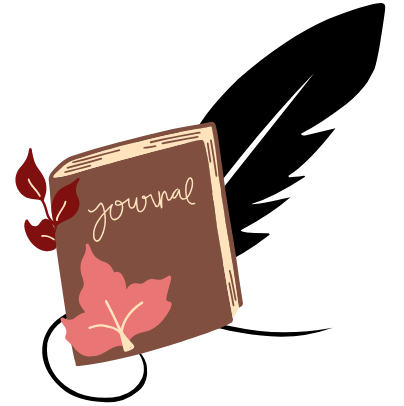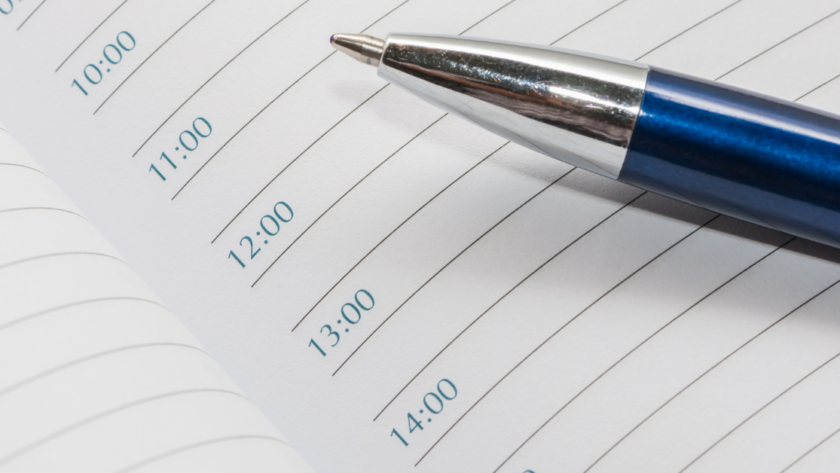It’s a frustrating experience we’ve all faced. But I’ve learned that waiting for inspiration is a recipe for disappointment. The key to consistent, fulfilling writing comes from crafting a personalized routine that sets you up for success.
The Science of Creativity: Understanding Your Brain’s Writing Mode
Our brains aren’t machines we can simply switch on for writing. They’re more like gardens that need the right conditions to flourish.
Research shows that our most creative states occur when we’re relaxed yet focused. Psychologist Mihaly Csikszentmihalyi calls this the “flow state” – a condition where time seems to disappear and words pour out efficiently.
While we can’t force flow, we can create ideal conditions for it to occur. This is where a well-designed writing routine becomes crucial.
By understanding the neuroscience of creativity, we can tailor our environments and habits to maximize our creative potential.
Designing Your Ideal Writing Space
Your writing environment plays a pivotal role in your productivity. Forget picture-perfect writing nooks – the best space is one that works for you.
Consider your sensory preferences:
Sound: Do you need silence or background noise? A 2012 study found that moderate ambient noise (around 70 decibels, similar to a coffee shop) can enhance creative performance for many people.
Experiment with silence, white noise, or even specially designed writing playlists to find your sweet spot.
Lighting: Dim lighting often encourages free-thinking and creative insights. However, if you’re doing detailed editing work, brighter light might help you stay alert.
Consider using adjustable lighting to match your task.
Comfort: Ensure your chair and desk are ergonomically sound to prevent discomfort during long writing sessions. Some writers swear by standing desks or even treadmill desks to incorporate movement.
Personalization: Surround yourself with objects that inspire you – books, artwork, or mementos that spark your creativity.
Pro Tip: Create a “writing trigger” in your space. This could be lighting a specific candle, putting on writing music, or wearing a particular item of clothing.
Over time, your brain will associate these cues with writing time, helping you slip into a creative mindset more easily.
Harnessing Your Circadian Rhythm: Finding Your Optimal Writing Time
The advice to “write first thing in the morning” doesn’t work for everyone. Your most productive writing time depends on your person circadian rhythm.
To find your optimal writing window, try this experiment for a week:
- Set aside three 30-minute writing sessions at different times of day.
- During each session, use a timer and write without stopping.
- At the end of each session, rate your energy level and satisfaction with your output.
- After a week, review your results to identify patterns.
You might find out about that your peak creative hours aren’t when you expected. Once you’ve identified your most productive time, protect it fiercely. Schedule your writing sessions during these hours whenever possible.
The Power of Ritual: Creating Your Writing Ceremony
Our brains thrive on routine. By establishing a consistent writing ritual, you’re training your mind to enter “writing mode” on command.
Your ritual doesn’t need to be elaborate – it could be as simple as:
- Making a specific type of tea or coffee
- Doing a quick meditation or breathing exercise
- Reading a few pages of a favorite book
- Lighting a candle or using an essential oil diffuser
The key is consistency. By repeating your chosen ritual before each writing session, you create a powerful mental association that primes your brain for creativity.
Famous authors throughout history have sworn by their writing rituals. Maya Angelou rented a hotel room to write in, Ernest Hemingway wrote standing up, and Victor Hugo wrote in the nude to avoid the temptation of leaving his house before finishing his daily word count.
While such extreme measures aren’t necessary, finding a ritual that resonates with you can be transformative.
The Pomodoro Technique: Sprinting Your Way to Success
Maintaining focus over long periods is a common challenge for writers. The Pomodoro Technique, developed by Francesco Cirillo in the late 1980s, offers a solution:
- Choose a specific writing task (e.g., drafting a scene, outlining a chapter)
- Set a timer for 25 minutes
- Work on the task until the timer rings
- Take a short 5-minute break
- After four “Pomodoros,” take a longer break (15-30 minutes)
This technique is effective for two main reasons:
- It breaks writing into manageable chunks, making the task less daunting.
- It harnesses the power of deadlines.
Knowing you only have 25 minutes can motivate you to focus and get words on the page.
Pro Tip: Use a physical timer instead of your phone to avoid digital distractions.
Fueling Your Creativity: The Writer’s Diet
The food you eat directly impacts your brain’s performance. While the stereotypical image of a writer might involve endless coffee and cigarettes, a balanced diet significantly boosts creativity and stamina.
Focus on these brain-boosting foods:
- Omega-3 fatty acids: Found in salmon, walnuts, and flaxseeds, these nutrients are linked to improved cognitive function.
- Complex carbohydrates: Whole grains and vegetables provide steady energy, avoiding the crash that comes with sugary snacks.
- Antioxidant-rich foods: Berries, dark chocolate, and green tea can help protect brain cells and improve memory.
- Hydration: Don’t underestimate the power of water. Even mild dehydration can impact cognitive function.
Regarding caffeine, moderation is key. While it can provide a short-term boost, overreliance can lead to burnout.
Consider alternating between caffeinated and herbal teas throughout your writing session.
Movement and Creativity: The Walking Writer’s Advantage
Sitting at a desk all day isn’t just bad for your health – it can stifle your creativity. A 2014 study found that walking, either outdoors or on a treadmill, increased creative output by an average of 60%.
Incorporate movement into your writing routine:
- Take a walk before you start writing to clear your mind
- Use a standing desk for part of your writing session
- Try a “walk and talk” method for working through plot problems – record your thoughts on your phone as you walk
- Do quick stretches or yoga poses during breaks
Movement increases blood flow to the brain, reduces stress, and can help you approach your writing from new angles. Don’t be afraid to step away from the desk when you’re feeling stuck.
Overcoming Writer’s Block: Techniques That Actually Work
Writer’s block is often a symptom of fear or perfectionism as opposed to a lack of ideas. Here are some powerful techniques to overcome it:
Freewriting: Set a timer for 10 minutes and write without stopping, without worrying about quality. This bypasses your inner critic and gets the creative juices flowing.
Change mediums: If you’re stuck on your computer, try writing longhand. The physical act of writing engages different parts of your brain and can unlock new ideas.
Use writing prompts: Keep a list of prompts or writing exercises handy for when you’re feeling stuck. These can jumpstart your creativity and lead you in unexpected directions.
Mind mapping: Create a visual representation of your ideas using a mind map. This can help you see connections and generate new thoughts.
Talk it out: Explain your story or idea to a friend (or even a pet). Verbalizing your thoughts can often clarify them and reveal new angles.
Remember, writer’s block is not a reflection of your ability as a writer. It’s just a sign that you need to switch gears or approach your work from a different angle.
Building a Sustainable Writing Habit: The Power of Consistency
Consistency trumps intensity when it comes to building a writing habit. Writing for 15 minutes every day is more useful than binge-writing for hours once a week.
To build a sustainable habit:
Start small: Commit to writing for just 5 minutes a day. This makes the habit feel achievable and reduces resistance.
Track your progress: Use a habit tracker app or a simple calendar to mark your writing days. Seeing your streak can be motivating.
Celebrate small wins: Completed your daily writing? Treat yourself!
This positive reinforcement helps solidify the habit.
Be flexible: Life happens. If you miss a day, don’t beat yourself up – just get back on track the next day.
Consistency over time is what matters, not perfection.
Link your writing to an existing habit: Try writing immediately after your morning coffee or before your evening shower. This “habit stacking” makes it easier to remember and stick to your new routine.
The Role of Community in Your Writing Journey
Writing can feel isolating, but it doesn’t have to be. Connecting with other writers provides motivation, feedback, and a sense of belonging.
Consider:
- Joining online writing communities or forums
- Attending local writing meetups or workshops
- Starting your own writing group with friends or colleagues
- Finding an accountability partner to share goals and progress with
- Participating in writing challenges or competitions
Sharing your goals and progress with others can be a powerful motivator. It also provides opportunities for feedback and learning from others’ experiences.
Embracing the Process: Your Writing Routine as a Living Document
Your perfect writing routine isn’t something you create once and stick to forever. It’s a living, breathing thing that evolves as you do.
Be willing to experiment and adjust your routine as needed. What works for you during a busy work week might not be ideal during a vacation.
Regularly assess your routine:
- What’s working well?
- What feels challenging or frustrating?
- Have your goals or circumstances changed?
- Are there new techniques or tools you want to try?
The key is to stay attuned to your needs and be willing to adapt. Your writing routine should support and inspire you, not feel like a chore.
Harnessing Technology: Tools to Enhance Your Writing Process
While technology can be a distraction, the right tools can significantly enhance your writing process:
Writing software: Programs like Scrivener or Ulysses offer features tailored for long-form writing projects.
Distraction-blocking apps: Tools like Freedom or Cold Turkey can block distracting websites during your writing time.
Cloud storage: Services like Dropbox or Google Drive confirm your work is always backed up and accessible.
Grammar and style checkers: Grammarly or ProWritingAid can help polish your work, though use them judiciously to maintain your unique voice.
Dictation software: For those who prefer speaking their ideas, tools like Dragon NaturallySpeaking can transcribe your words.
Remember, these tools should enhance your process, not complicate it. Experiment to find what truly helps you write more effectively.
The Importance of Rest and Reflection
Downtime is a crucial part of the creative process. Your brain needs time to process information, make connections, and generate new ideas.
Build rest and reflection into your routine:
Schedule regular breaks: Use the Pomodoro Technique or set reminders to step away from your work periodically.
Practice mindfulness: Meditation or simple breathing exercises can help clear your mind and reduce stress.
Journal: Keep a writing journal to reflect on your process, challenges, and successes.
Read widely: Exposure to different writing styles and ideas can inspire and tell your own work.
Engage in other creative activities: Painting, music, or crafts can stimulate different parts of your brain and lead to new insights in your writing.
Remember, time away from active writing is not wasted time. It’s an essential part of the creative process.
Frequently Asked Questions
How long should my daily writing session be?
The ideal length varies for each writer. Start with 15-30 minutes and adjust based on your schedule and productivity.
Consistency matters more than duration.
What’s the best time of day to write?
This depends on your person circadian rhythm. Experiment with different times to find when you’re most alert and creative.
How do I stay motivated to write every day?
Set small, achievable goals, track your progress, and reward yourself for consistency. Connecting with other writers can also boost motivation.
Can I write on my phone or tablet?
Yes, if it works for you. Many writers find success with mobile writing apps, especially for capturing ideas on the go.
How do I overcome perfectionism in my writing?
Practice freewriting without editing, set time limits for drafting, and remember that all first drafts are imperfect. Editing comes later.
Is it okay to listen to music while writing?
Some writers find music helpful, while others prefer silence. Experiment to see what enhances your focus and creativity.
How do I find time to write with a busy schedule?
Look for small pockets of time throughout your day. Wake up 15 minutes earlier, write during your lunch break, or replace some TV time with writing.
What should I do if I run out of ideas?
Keep a running list of writing prompts, try freewriting exercises, or take a walk to stimulate new thoughts. Reading in your genre can also spark ideas.
How important is a dedicated writing space?
While helpful, a dedicated space isn’t essential. The key is finding an environment that helps you focus, whether that’s a home office or a local café.
Can changing my diet really improve my writing?
Yes, a balanced diet rich in brain-boosting foods can enhance cognitive function, creativity, and stamina for writing.
Key Takeaways
- Create a writing environment that caters to your sensory preferences and minimizes distractions.
- Identify your peak creative hours and protect them for writing.
- Develop a consistent writing ritual to signal your brain it’s time to create.
- Use techniques like the Pomodoro method to maintain focus and productivity.
- Fuel your creativity with a balanced diet and regular movement.
- Overcome writer’s block with freewriting, medium-switching, and other targeted techniques.
- Build a sustainable writing habit through consistency, tracking, and celebration of small wins.
- Connect with other writers for motivation, feedback, and community support.
- Regularly assess and adjust your routine to confirm it continues to serve your needs.
- Remember that rest and reflection are essential parts of the creative process.




